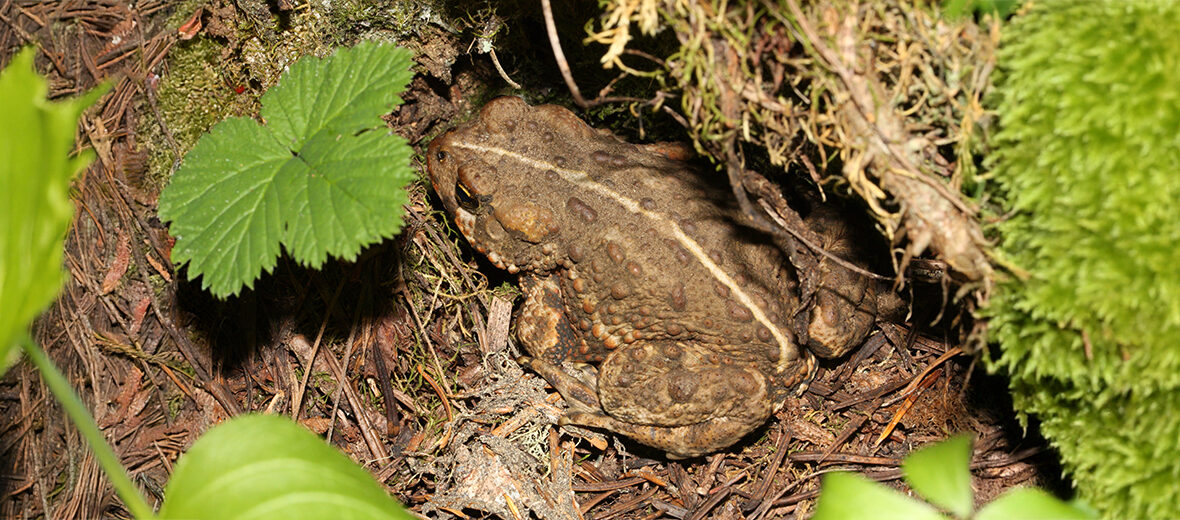
The western toad is a larger species native to western North America & Mexico. These toads are known for their ability to jump large distances, for a toad. These critters face many threats like habitat loss and destruction at the hands of residential and commercial developments, farming, ranching, mining, and quarrying; while roads and railroads divide their territory and frequently cause vehicle strike (being hit by vehicles); invasive species, that can result in predation & disease; and pollution, both land and water. The IUCN lists these hoppers as Least Concern, but their population trend is decreasing. This article is for Nikolai. Enjoy, little buddy.
First the Stats…
Scientific name: Anaxyrus boreas
Weight: Up to 2.1 ounces
Length: Up to 5.1 inches
Lifespan: Up to 11 years
Now on to the Facts!
1.) Their wide range extends from western British Columbia and southern Alaska on south through Washington, Oregon, and Idaho, down to northern Baja California, Mexico; out east to Montana, western & central Wyoming, Nevada, the mountains and higher plateaus of Utah, and western Colorado.
2.) Southern records of the boreal toad in New Mexico have been published, however the species is considered extirpated from the state, with a planned reintroduction in progress.
3.) There are 2 subspecies, the boreal toad and the California toad.
4.) Their preferred habitats are marshes, springs, creeks, small lakes, meadows, woodlands, forests, and desert riparian regions.
5.) Hibernating during the colder winter months these toads are typically active from January – October, depending on latitude and elevation of their occurrence.
But wait, there’s more on the western toad!
6.) Emergence from hibernation typically follows a few days of warm temperatures that free the entrance to their burrow and increases temperatures within the chamber to about 39.2°F.
7.) At lower elevations these toads are nocturnal (active at night); at higher elevations and in the northern parts of their range they are more diurnal (active during the day).
Did you know…?
Gender ratios vary according to habitat type; males are more numerous in wet habitats while females are more numerous in dry habitats.
8.) These toads are typically situated in or near ponds, lakes – even saline (partially salty) lakes, reservoirs, rivers, and streams.
9.) In a laboratory experiment these toads were able to survive in water that contained up to 40% salinity (salt), but died at the 50% mark.
10.) These toads can be found at elevations of up to 11,860 feet!
But wait, there’s still more on the western toad!
11.) Western toads require open water for breeding. All breeding members of a local population typically lay their eggs in the same location, which is repeatedly utilized year after year.
12.) Eggs are laid in gelatinous strings of up to 52 eggs per inch, in masses of up to 16,500 eggs per clutch.
Did you know…?
Tadpoles are preyed upon by amphibians, birds, fish, reptiles, invertebrates, and various mammals. Adults are preyed on by larger amphibians, ravens, various other birds, reptiles, and a variety of mammals as well.
13.) Tadpole metamorphosis into juvenile toads takes place in up to 3 months. However, the growth rate is increased in warmer water with a greater abundance of food.
14.) Western toads are terrestrial (spend their life on the ground). Their body temperatures are largely controlled by basking (getting heat from the sun) and evaporative cooling (leaving the water and then drying off). In order to avoid desiccation (drying out), they typically spend the daylight hours on the forest floor among the soil under rocks, logs, stumps, or other objects or dwell in rodent burrows.
15.) Ants, various arachnids, bees, beetles, juvenile crayfish, sow bugs, grasshoppers, trichopterans (caddisflies), lepidopterans (butterflies & moths), and dipterans (flies) are all feasted upon.
But wait, there’s still a tad more on the western toad!
16.) 1 chemical threat these toads face is the overuse of urea as fertilizer, which is typically applied in high dosage to forest environments to increase biomass productivity and subsequent economic return. The higher the urea the greater chance of death to these toads.
17.) Chytridiomycosis is yet another threat these toads face. Chytrid has caused the decline or extinction of at least 501 amphibian species!
Now a Short Western Toad Video!
Be sure to share & comment below! Also, check out the Critter Science YouTube channel. Videos added regularly!

Want to suggest a critter for me to write about? Let me know here.
Some source material acquired from: Wikipedia & IUCN
Photo credit: Walter Siegmund



